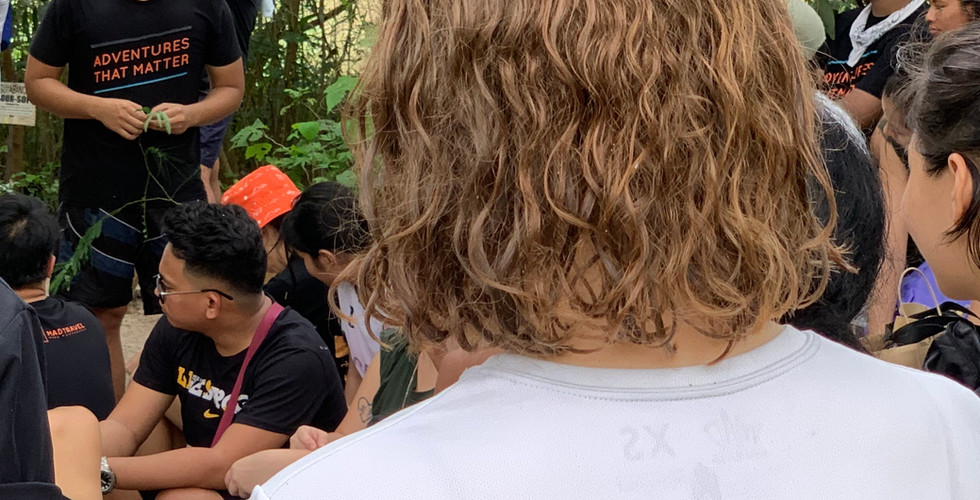Regenerative Tourism: Going beyond Sustainability.
- The Lighthouse Legacy Foundation

- Jan 31, 2022
- 4 min read
Updated: Dec 26, 2022
The Philippine government declared on January 28 that it would begin admitting visitors who have been vaccinated against Covid-19 on February 10, in a move to rehabilitate the country's tourism economy, which has been devastated by the epidemic.

Tourism is defined as the act and process of spending time away from home in pursuit of recreation, relaxation, and pleasure, while making use of the commercial provision of services.
Just like when the Lighthouse Marina Resort was established in 2007 in Subic Bay, we made sure we were familiar with the area as well as the people and began to explore the coastline, forests and mountain ranges of Zambales and it was truly an enjoyable experience.
Check out the slide show below to see some of the destinations you can visit in Subic Bay and Zambales!The tourism sector has become one of the great economic engines of many countries, however, it has begun to affect the social structures, culture, and lifestyle of the areas visited as well as it's natural environment.
The challenge now is to provide solutions through the development of a tourism consciousness that is respectful of the environment and the indigenous people's way of life.
According to Usec. Benito Bengzon of the Department of Tourism (DOT) , their Agency is now looking at promoting the concept of "regenerative tourism" an emerging movement to go beyond sustainable tourism which also involves all stakeholders to make destinations better for both current and future generations. [Philippine News Agency, 27/05/21]
While eco-friendly is simply defined as 'not doing any harm' and sustainable means reaching net zero,' regeneration takes a 'whole systems' approach and actually makes the environment better.
We need to go beyond sustainability and try to do more than just keep things safe but also try to fix things that have been broken and grow things that have been lost.
Regenerative tourism represents a sustainable way of travelling and discovering new places. Its main goal is for visitors to have a positive impact on their destination, leaving it in a better condition than how they found it. A concept that goes beyond "not damaging" the environment and that looks to actively revitalize and regenerate it, resulting in a positive impact on local communities and economies: sustainable regeneration.
As our country's tourism industry reopens in February, we wish to urge each of us to consider being a regenerative tourist. Here are some ways:
1. Offset your emissions by planting trees
There are social enterprises such as MAD Travel which has made it a mission to reforest the barren mountains of Zambales by bringing thousands of tourists to plant trees as part of sustainable eco-tourism program that basically helps people, revive our planet, while generating profit through sustainable business practices.
2. Buy from local businesses and establishments
First and foremost, buying local goods would have less environmental impact due its low carbon footprint. It is even considered fresher, healthier while supporting the local economy.

Give back to community through tourism where they can get income through meals, tourism services, and local souvenirs or what us Filipinos call "pasalubong".
3. Help clean up and restore the environment.
Besides practicing reduce, reuse, and recycle, when we see trash, we pick it up and dispose of it properly. Hopefully, the places you visit will have proper recycling programs in place.
For our waste management programs, we work with organizations such as The Plastic Solution, Precious Plastic Philippines, and Green Antz Builders that convert plastic waste into useful items and prevent these toxic trash to end up in our ocean.

4. Support responsible operators.
We are very happy with our partnership with MAD Travel whose objective is to create and operate an inclusive and sustainable eco-tourism program that provides a triple bottom line: People, Planet, and Profit (in that particular order). Through their programs, travelers can make make a difference while they enjoy activities such as hiking against a backdrop of breathtaking natural beauty.

As a society, we are becoming increasingly aware that we need to take care of the planet. This is something that we also think about when we are on a holiday or out traveling. Traveling sustainably is not just possible — it also brings us much closer to the world in which we live.
While hotels like ours have a huge role to play, the success of the concept depends on travelers' actions too. But you can count on us that we will work on improving our business and head towards regenerative tourism. We hope to see you in Subic Bay very soon!
Enjoy this short video of El Kabayo Falls in Subic Bay!
About the Author

Zed Avecilla is the Managing Director of the Lighthouse Marina Resort Legacy Foundation, a subsidiary of the Lighthouse Marina Resort in Subic Bay Freeport, an awardee of the ANAHAW Philippine Sustainable Tourism Certification by Zero Carbon Resorts. He is also the Area Coordinator for the International Coastal Cleanup in Zambales since 2009.
Article references:




























































































Comments